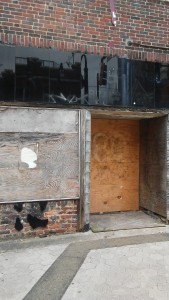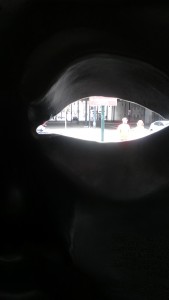Auburn Avenue, or better known as “Sweet Auburn,” was considered the capital of black American commerce during the early 20th century. The title, despite its glorious connotation, fails to mention the status in which the African-American community faced during such times. Restriction and segregation played a huge role in the establishment of this title, as it was through the limitations of black communities that resulted in their banding together and creating what was known as the greatest black American business district in the country. Heavily influenced by segregation, Auburn Avenue gave birth to one of the most influential minds in history, Dr. Martin Luther King Jr., a man whose actions and aspirations shaped the entire cultural fabric of the street. Once known as the most thriving black American business district, now is known for its role in the civil rights movement. The street still retains some of its previous images as an area of commerce, holding onto old remnants of former business such as the abandoned insurance building and the (still running) funeral house I documented. However, what seems to be most abundant, is the presence of Dr. King and his movement for civil equality.
Walking along the street you will see an array of murals, from paintings depicting leaders such as Congressman John Lewis, a staunch supporter of black American equality, to slogans and statues that embody the movement; the statue of John Dobbs being one such example. The cultural dynamic of the street revolves around the civil rights movement and everything it entailed. This notion presents itself throughout the entirety of the Avenue as there are endless amounts of artifacts that point towards the movement and its leaders, the dedication of Dr. Kings neighborhood as a national historic park is a prime example of how much the civil rights movement has impacted and shaped the street. In the video I took, it can clearly be seen that Dr. King’s neighborhood, now a historic center, does not detach itself from the street whatsoever, rather its easy access and connectivity to the rest of the street suggests a relation between the historic center and the Avenue. The cultural heritage left behind by Dr. King and others has shaped Auburn Avenue into what it is today. A straight path, Auburn Avenue is by no means a hard to navigate street, walking along which, I could not help but feel a sense of isolation, almost as if the Avenue itself belonged in an entirely different space. Which by no means entail the contrary, rather the separation serves as evidence of just how much its culture shaped the street, providing an entirely unique identity which discerns it from neighboring streets.



